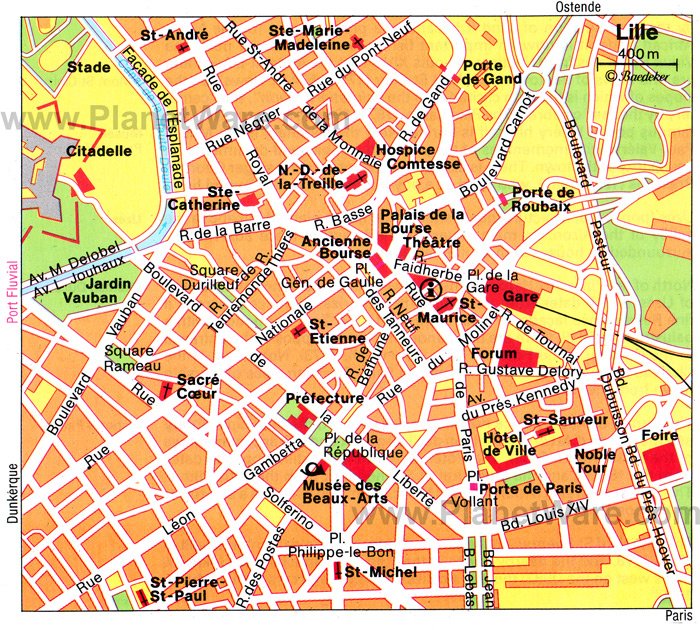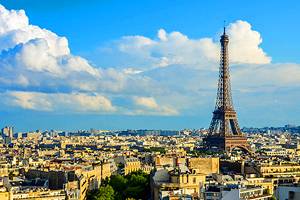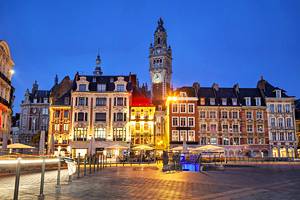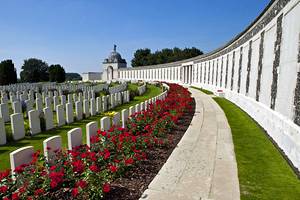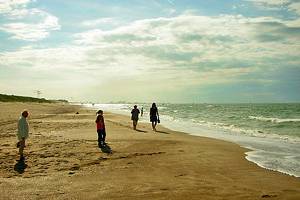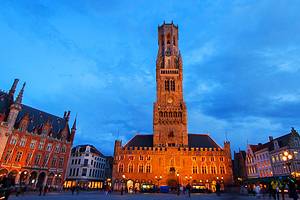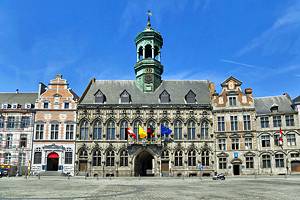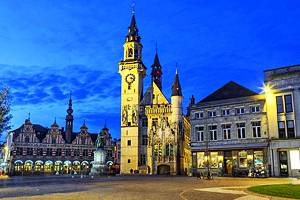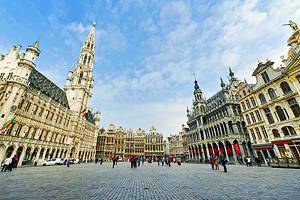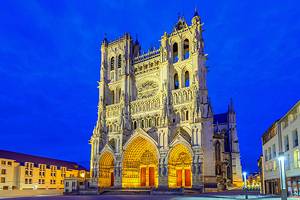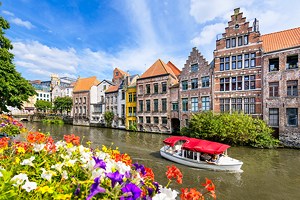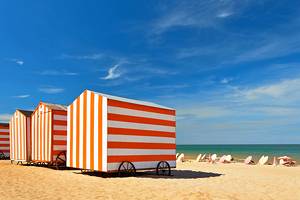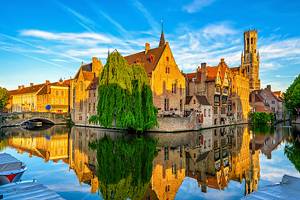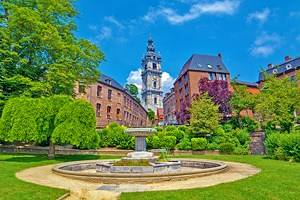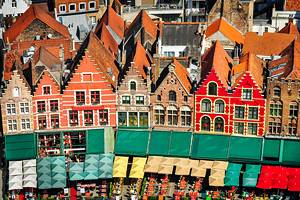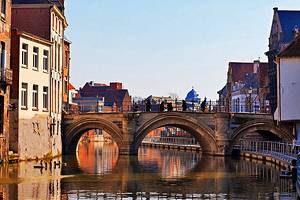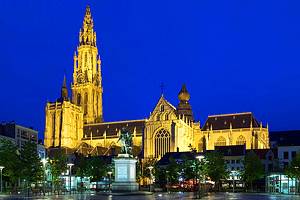Tourist Attractions in Lille
Author Lisa Alexander spent two years living in France and has traveled the country extensively.
A worthwhile detour between Paris and Brussels leads to Lille, the historic capital of Flanders (a medieval principality that encompassed part of northern France, as well as Belgian and Dutch provinces). Today, Lille is the largest and most important metropolis in the Nord-Pas-de-Calais region of France.
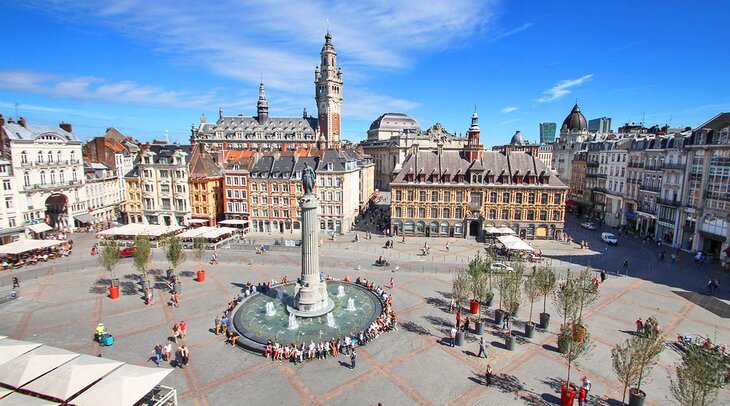
Lille's Flemish cultural heritage is seen in its distinctive Baroque architecture and hearty cuisine. Lilloise gastronomy incorporates typical Belgian dishes, and unique local specialties like "waterzo"" (fish or poultry in cream sauce with vegetables) and "potjevleesch" (potted meat terrine).
When visiting Lille, the most enjoyable things to do include wandering the cobblestone pedestrian streets of Vieux Lille (the old town), stopping at cozy cafés, and discovering its many tourist attractions. A world-class fine arts museum, the avant-garde cathedral, and Charles de Gaulle's birthplace are among the highlights.
This vibrant urban destination has a pleasant city center and friendly atmosphere without any pretensions. Plan your sightseeing visit to the city with our list of the top tourist attractions in Lille.
Place du Général de Gaulle (Grand Place)
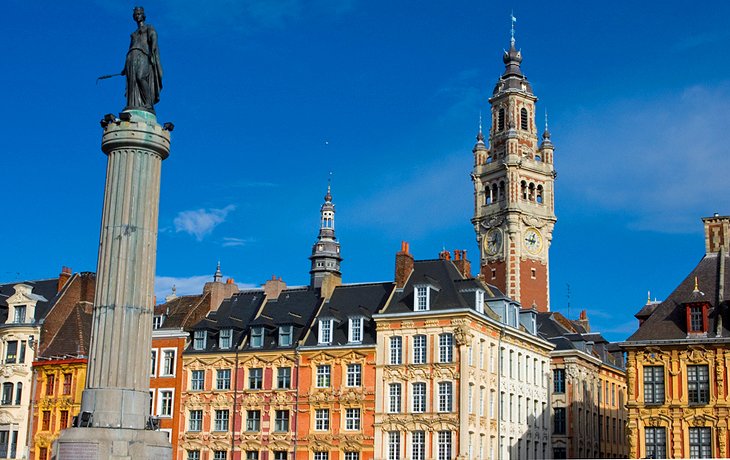
The bustling main square of Lille, the Place du Général de Gaulle is surrounded by stately Renaissance and Baroque Flemish buildings with ornately adorned Neoclassical façades. Also known as the Grand Place, the square is a favorite meeting place for Lillois. This center of social activity is filled with cafés and brasseries.
In the middle of the square, the bronze Goddess monument (La Déesse) commemorates Lille's resistance to the Austrian siege of September 1792. The Goddess holds a linstock (the instrument used to light the fuses on cannons). On the base, an engraved inscription reads: "The courageous response of the Mayor of Lille, André, who refused to surrender the besieged city." The Goddess was sculpted in 1845 by Théophile Bra, who also created bas-reliefs on the Arc de Triomphe in Paris.
On the south side of the square is one of Lille's most beautiful buildings, the Vieille Bourse (Old Stock Exchange), which was established in 1652. The Vieille Bourse is comprised of 24 houses that surround an arcaded courtyard. Exemplifying opulent Flemish Baroque style with its elaborate decoration, the courtyard features a monument to Napoleon I at the center.
The galleries of the Vieille Bourse courtyard host the Marché de Bouquinistes (Booksellers' Market), held year-round (Tuesday through Friday from 1pm until 7pm and Saturday and Sunday from 11am until 7pm). To find the market, enter the Vieille Bourse at the Place du Théâtre/Grand Place. Tourists and locals alike enjoy browsing the selection of used books and collectible editions as well as comic books, DVDs, vintage newspapers, lithographs, and posters.
In summertime, Tango Dancing events take place on the Vieille Bourse courtyard's patio.
Also found on the Place du Général de Gaulle is the Grande-Garde, former housing for sentry guard soldiers. Constructed in 1717, the Grande-Garde has been converted to the Théâtre du Nord.
Palais des Beaux-Arts (Fine Arts Museum)
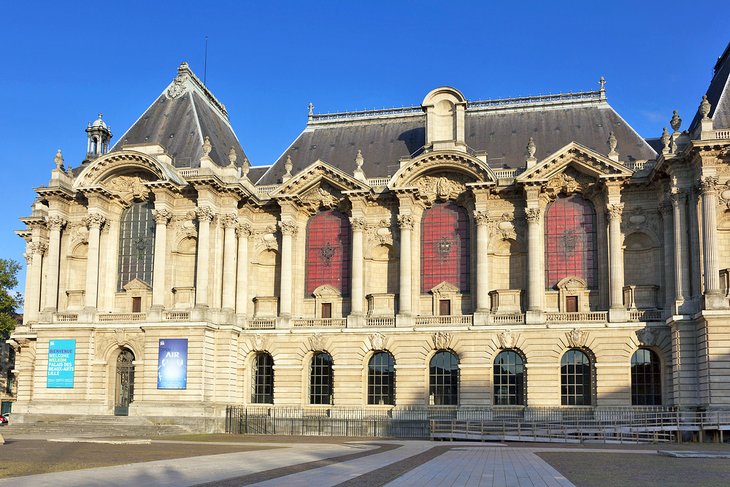
One of the essential things to do in Lille is visit the Palais des Beaux-Arts, considered the second most important museum in France after the Musée du Louvre in Paris. Renowned for its size and quality, this prestigious art collection is housed in an impressive building with a spacious and bright atrium.
The museum displays an exceptional collection of European paintings by the Old Masters, including Rubens, Van Dyck, Goya, Delacroix, and David. There are also wonderful examples of 19th- and 20th-century French paintings, as well as Impressionist art, an antiquities collection, and a sculpture gallery with pieces by Rodin and other artists.
Those who appreciate military history will enjoy the 18th-century relief maps of fortified towns in Northern France and Belgium (which were used by French Kings during wars).
Amenities at the Palais des Beaux-Arts include a library and a boutique that sells books and gift items. Well-designed to welcome visitors, the museum provides casual dining and refreshment options (breakfast, coffee, lunch, and snacks) at Le Beau Café, which is open during museum hours. The café's seasonally updated menu features dishes prepared from fresh, local ingredients.
Address: Place de la République, Lille
Official site: http://www.pba-lille.fr/en
Musée du Louvre-Lens
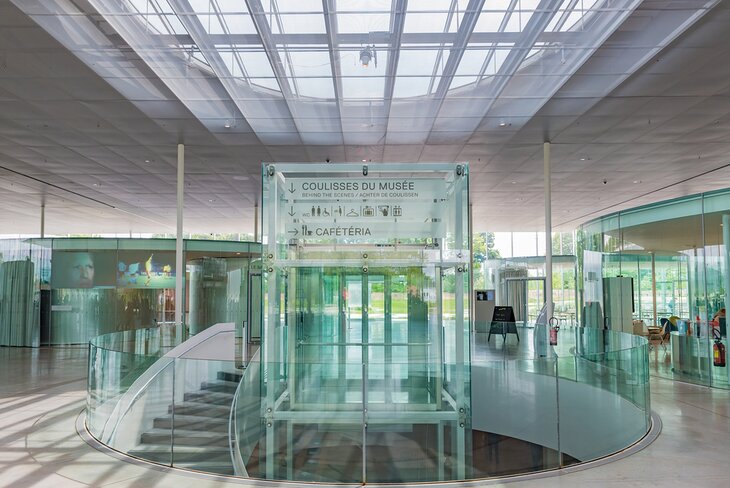
The Musée du Louvre-Lens dazzles visitors with its sleek exhibit spaces and top-notch collection. The source of the artworks on display couldn't be more prestigious. The Louvre-Lens Museum gets its rotating art exhibits on loan from the Musée du Louvre in Paris. Exhibitions are updated on a regular basis.
In a wide-open gallery space of 3,000 square meters, the Galerie du Temps presents a chronological exhibition of more than 200 Louvre masterpieces. The artworks are arranged in a novel way, with multidisciplinary exhibits that show the evolution of art through different periods of history, from antiquity to the modern era.
For art lovers, the Musée du Louvre-Lens is a worthwhile excursion from Lille. The drive takes about 30 minutes by car. The direct train ride from Lille to Lens takes around 45 minutes. At the Gare de Lens (train station), there is a pedestrian pathway that leads to the Musée du Louvre-Lens. It takes about 25 minutes to walk from the train station to the museum.
Address: 99 Rue Paul Bert, Lens 62300
Official site: http://www.louvrelens.fr/en/home
Lille Métropole Musée d'Art Moderne, d'Art Contemporain et d'Art Brut
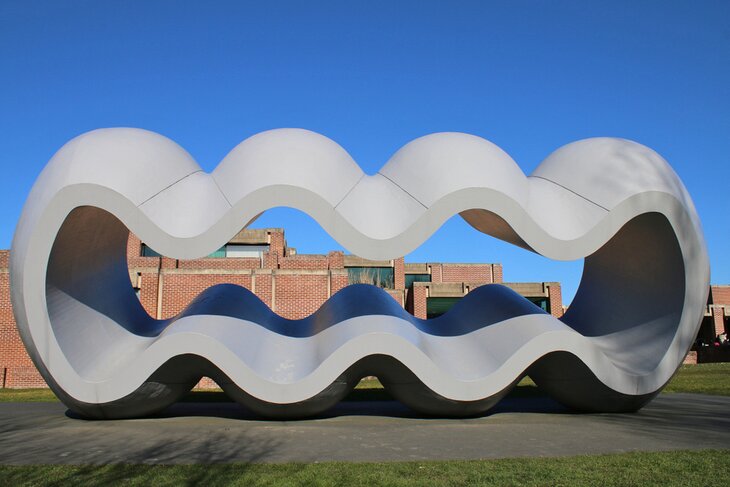
About 12 kilometers northeast (a 20-minute drive) from Lille is Villeneuve d'Ascq, renowned for this prestigious museum of modern art. The Lille Métropole Musée d'Art Moderne, d'Art Contemporain, et d'Art Brut, which also goes by the acronym LaM, has one of the most comprehensive collections of modern (20th-century) and contemporary (21st-century) art in France.
The museum displays more than 7,000 works in bright exhibition spaces. Highlights of the collection include works by famous artists such as Braque, Kandinsky, Klee, Miró, Modigliani, and Picasso.
Lush parkland surrounds the museum, including a pathway overlooking a series of ten art installations. Visitors will enjoy taking a stroll through the grounds while admiring the monumental sculptures by Alexander Calder and Picasso, among others.
The museum also has a bookshop/boutique and a café with outdoor patio seating. The café prepares French, Italian, and fusion cuisine from scratch, using locally-sourced seasonal ingredients. Specialties are the salmon en papillote, lasagna, and homemade pastries such as lemon tart and chocolate cake.
LaM is open Tuesday through Sunday from 10am until 6pm. The museum is closed on Mondays and on January 1st, May 1st, and December 25th.
Address: 1 allée du Musée, 59650 Villeneuve d'Ascq
Musée de l'Hospice Comtesse
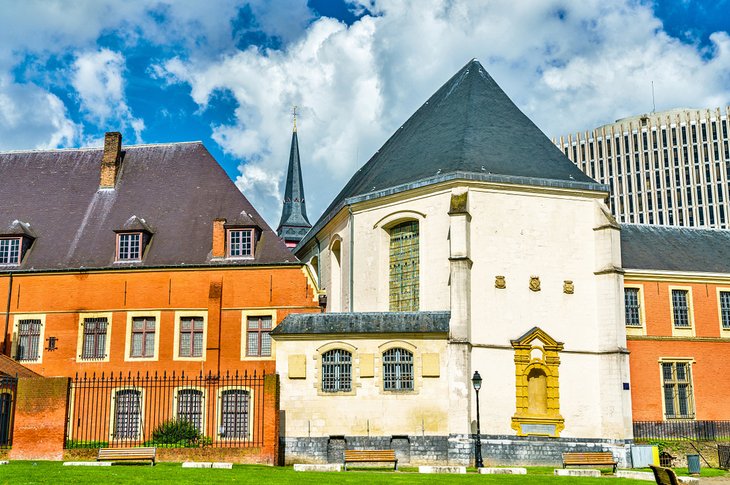
In the heart of the old town (Vieux Lille), the Musée de l'Hospice Comtesse occupies a medieval hospital founded in 1237 by the Countess Jeanne de Flandre. The countess built the hospital in a wing of her own palace, which was later used by Augustine nuns. The hospital remained in service until 1939, and the property was converted to a museum in 1962.
The museum grounds include buildings dating to the 15th through 18th centuries: the old hospital ward, convent buildings, and a chapel that belonged to nuns. The buildings are arranged around two courtyards and a garden where medicinal plants were grown.
A visit to this museum allows tourists to admire a collection of tapestries, sculptures, and porcelain from the 17th-century Flemish convent. The museum occasionally hosts temporary exhibitions of contemporary art.
Address: 32 Rue de la Monnaie, Lille
Eglise Saint-Maurice
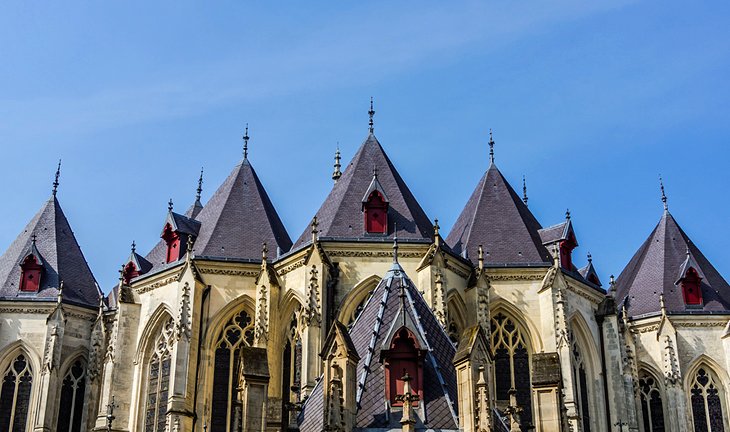
The Eglise Saint-Maurice is a beautiful Gothic church that was founded in the 14th century. The church has been renovated several times, as recently as the 19th century, yet has retained a sense of architectural unity. With its tower on the façade, the building is an example of an "Hallekerque" (barn-like church), a type of structure adapted to the fragile, marshy soil of Flanders.
The Saint-Maurice Church is also distinguished by its harmonious interior featuring five aisles and 36 tall columns. The sanctuary is decorated with 17th- and 18th-century paintings by Lille artists.
Another interesting church nearby is the Eglise Sainte-Catherine on Rue Royale, which is lined by lovely historical buildings. This 15th-century Gothic church boasts an exceptional painting, the Martyrdom of Saint Catherine by Rubens, in the north aisle.
At the other end of Rue Royale is the Eglise Saint-André. This 18th-century church was built for the Order of Carmelites.
Address: Rue de Paris, Parvis Saint-Maurice, Lille
Rang du Beauregard
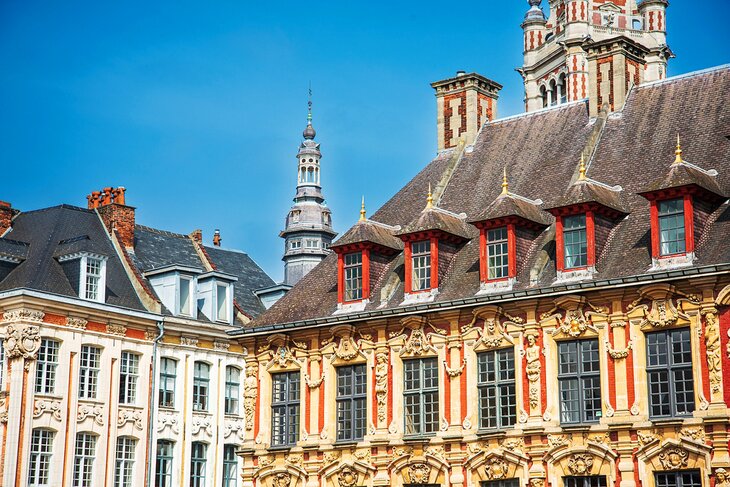
The elegant 17th-century buildings of the Rang du Beauregard stand resplendent on the Place du Théâtre opposite the Vieille Bourse. The row of houses was created in 1687 by Simon Vollant based on guidelines from the City Council of Lille to achieve uniformity of architecture in the city center. The buildings were required to conform to specific design standards aligning with the Vieille Bourse.
Builders had to follow a blueprint of three floors with an attic above and were only allowed to use stone and brick. The buildings feature harmonious classical lines and decorative sculptural details such as cartouches, scrolls, cornucopias, and angels.
The Rang du Beauregard exemplifies Lilloise Neoclassical Baroque style and is intertwined with the history of Lille. Contained within the façades are cannonballs from the 1792 Siege of Lille by the Austrians.
Address: Place du Théâtre, Lille
Cathédrale Notre-Dame de la Treille
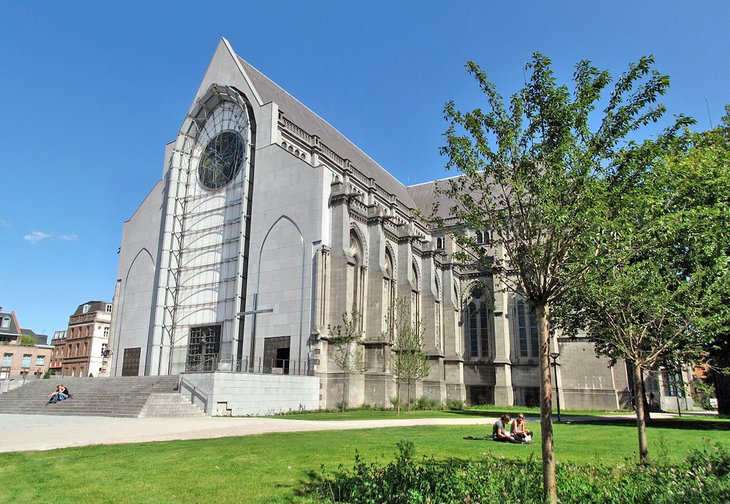
Built in 1854, the Cathédrale Notre-Dame de la Treille is a Neo-Gothic structure with surprising details. The somber contemporary-style façade (completed in the 1990s) features an arched "veil" of translucent pink marble with a modern rose window at the center. Unique in architectural style, the façade creates a striking impression and brightens the sanctuary.
The cathedral takes its name from a medieval statue of the Virgin Mary ("Notre-Dame de la Treille") that was protected by a wrought-iron gate (trellis). This statue was considered to have miraculous powers and for centuries was venerated by pilgrims from all over Europe. Saint Louis (King of France) made a pilgrimage here in the 13th century.
A short stroll north of the cathedral is the Eglise Sainte-Marie-Madeleine. Built in 1675, this church boasts an attractive Baroque design and an impressive 50-meter high dome; the façade dates from 1884.
Address: Place Gilleson, Lille
Maison Natale Charles de Gaulle
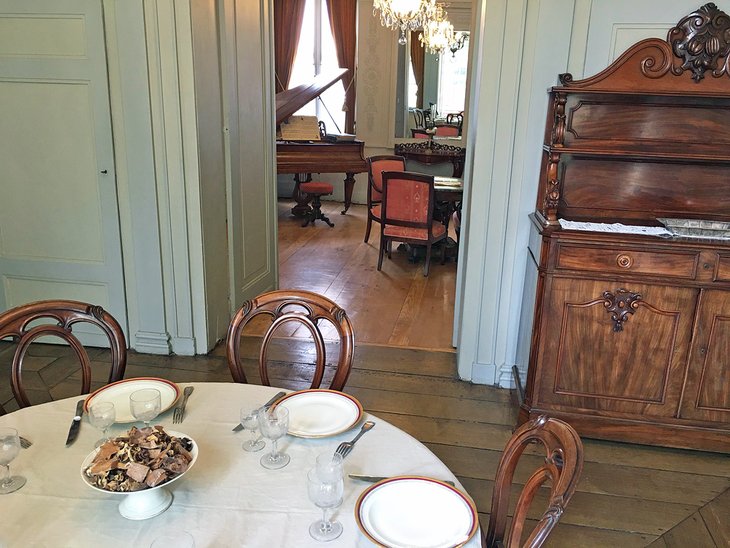
One of France's greatest statesmen, Charles de Gaulle was born in Lille on November 22, 1890 and baptized at the nearby Saint-André Church. His birthplace and childhood home on 9 Rue Princess is listed as a Historic Monument, as well as a "Maison des Illustres" ("House of the Illustrious") in recognition of Charles de Gaulle's historical significance and political distinction. The home has been restored and converted into a museum.
Visitors can take a self-guided tour of the home to view a collection of family mementos and other personal items including Charles de Gaulle's cradle, his christening robe, and a Saint-Cyr sword from his youth. Guided tours in French are available.
A multimedia center provides a historic overview of Charles de Gaulle's life and accomplishments. The Maison Natale Charles de Gaulle also presents temporary exhibits.
Address: 9 Rue Princess, Lille (Take Bus 14 or 50 to Les Bateliers stop)
Lille Flea Market (Braderie de Lille)
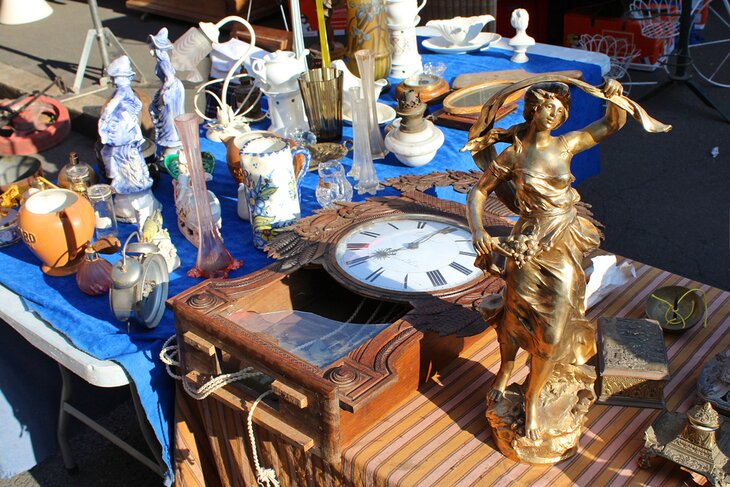
Lille is one of the best places to visit in Europe for flea market shopping. The city's famous and well-attended annual event, the Braderie de Lille, takes place the first weekend of September.
The "braderie" (French for "low-price sale") has been a tradition in Lille since the 12th century. The first flea market was held in 1127. By the 16th century, the braderie became a larger event with more participants, including servants who sold used items from the estates where they worked.
More than 10,000 exhibitors sell their wares at open-air market stalls placed throughout the city. Items for sale include used books, old records, vintage furniture, antique silverware and dinnerware, and second-hand clothing, jewelry, artisan crafts, and artwork.
Besides the flea market, there are concerts and soirées, which give the event a convivial ambience similar to a festival. The Braderie de Lille draws huge crowds and features a food and drink fair plus carnival rides. Tourists will enjoy the local street food, including mussels, French fries, grilled fish, and other regional specialties.
Musée d'Art et d'Industrie André Diligent (La Piscine de Roubaix)
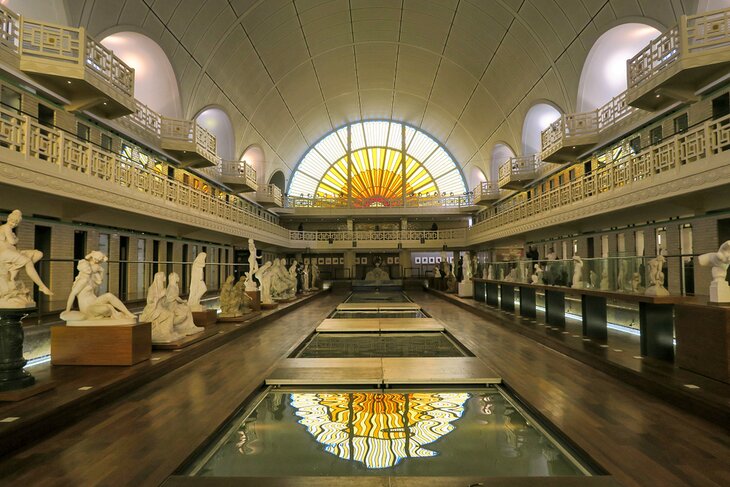
This exceptional modern art museum surprises visitors with its unexpected venue: the former Art Déco swimming pool in Roubaix, 15 kilometers from Lille. Although no longer used for swimming, the pool provides a unique setting for the museum's collections.
Galleries of art on three floors display a wide variety of artworks. An interesting assortment of ceramics by Picasso, Dufy, and Chagall (among others) adorns the area around the pool. Not to be missed are the 19th- and 20th-century paintings by famous artists such as Ingres, Vuillard, Bonnard, Vlaminck, Mondrian, and Dufy in the Fine Arts collection.
After viewing the artwork, visitors may enjoy a casual meal or refreshments at the Restaurant du Musée (open Tuesday through Sunday from noon until 5:30pm). On sunny days, it's especially pleasant to sit at the restaurant's shaded outdoor terrace that overlooks a garden.
The museum is open every day except Mondays, and has a boutique that offers a selection of books, postcards, games, and jewelry.
Address: 23 Rue de l'Espérance, 59100 Roubaix
Lille, France - Climate Chart
| Average minimum and maximum temperatures for Lille, France in °C | |||||||||||
| J | F | M | A | M | J | J | A | S | O | N | D |
| 6 1 | 6 1 | 9 3 | 12 4 | 17 8 | 19 11 | 22 13 | 23 13 | 19 11 | 14 7 | 9 4 | 7 2 |
| PlanetWare.com | |||||||||||
| Average monthly precipitation totals for Lille, France in mm. | |||||||||||
| 48 | 41 | 43 | 43 | 51 | 56 | 61 | 58 | 56 | 64 | 61 | 58 |
| Average minimum and maximum temperatures for Lille, France in °F | |||||||||||
| J | F | M | A | M | J | J | A | S | O | N | D |
| 42 33 | 43 33 | 49 37 | 54 40 | 62 46 | 67 52 | 72 55 | 73 55 | 66 51 | 58 45 | 48 39 | 44 36 |
| PlanetWare.com | |||||||||||
| Average monthly precipitation totals for Lille, France in inches. | |||||||||||
| 1.9 | 1.6 | 1.7 | 1.7 | 2.0 | 2.2 | 2.4 | 2.3 | 2.2 | 2.5 | 2.4 | 2.3 |
More Related Articles on PlanetWare.com
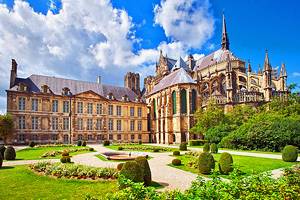
Nearby Places to Visit: For many tourists, a visit to Lille is taken as a day trip from Paris or as a detour on the way to Brussels, the capital city of Belgium. Within France, the peaceful countryside and historic attractions of the Champagne region are easily accessible from Lille in less than two hours by train or car. The lively city of Amiens, in France's Picardy region, is less touristy but worth the trip (about 90 minutes by train or car).
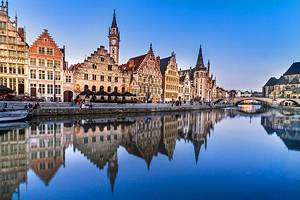
Charming Towns in Belgium: Lille could also be incorporated into various vacation itineraries, such as a tour of Belgium's highlights: The picturesque old city of Ghent is just over an hour away by train; the dreamy medieval city of Bruges is two hours away by train; and bustling Antwerp, rich in culture and history, is also just over two hours away by train.
